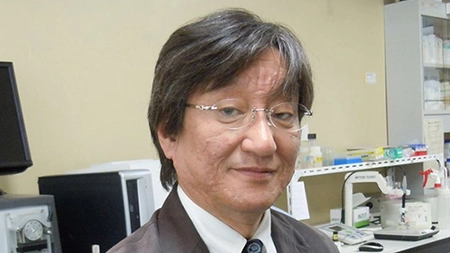
CRISPR technology is revolutionizing the way we think about genetics and biotechnology. The CRISPR systems allow scientists to accurately target, edit, delete or copy individual parts of an organism’s genome – thus providing a more precise method for diagnosis and treatment compared with traditional methods. In this blog post, we will discuss how researchers are making use of this cutting-edge technology to develop novel diagnostic assays that can detect genetic diseases in a far faster and cost-effective manner than before. We will explore various examples from the literature as well as outline applications at the clinical level. Ultimately our goal is to provide essential knowledge on how current developments related to gene editing may eventually impact potential diagnostic tests in everyday medical practice.
Introducing CRISPR – Overview of this powerful technology


CRISPR is a relatively new technology. But the story starts with the discovery in 1987 by Japanese researcher Yoshizumi Ishino, who identified unusual repeating sequences in the DNA of E. coli. However, it was not until 2012 that CRISPR really entered the public consciousness, when researchers Jennifer Doudna and Emmanuelle Charpentier showed that the CRISPR-Cas9 system could be used to edit genes in a precise and efficient manner. Since then, CRISPR has become a rapidly evolving field of research, with applications in everything from medicine to agriculture.
CRISPR has been in the news a lot lately, and for good reason. This revolutionary technology allows researchers to make precise cuts in DNA, which opens the door to exciting new possibilities in fields like medicine, agriculture, and more. With CRISPR, scientists can potentially cure genetic diseases, crop diseases, and even create entirely new organisms. It’s a game-changing tool that’s still relatively new, but already making waves in the scientific community. While there are still ethical and safety concerns to be addressed, the potential benefits of CRISPR are too significant to ignore.
Benefits of Using CRISPR to Develop Diagnostic Assays
CRISPR technology has revolutionized the field of science and medicine, offering new ways to diagnose and treat diseases with high precision. One of the most exciting applications of this technology is the development of diagnostic assays, which can accurately detect the presence of specific genetic material in a sample. By leveraging the programmable nature of CRISPR, scientists can design assays that are tailored to their specific needs, resulting in faster and more accurate diagnoses of various diseases. Additionally, this can reduce costs associated with traditional testing methods, making healthcare more accessible to people around the world. With the potential to save lives and improve quality of life, it is easy to see why CRISPR-based diagnostic assays are becoming increasingly popular in the medical community.
How CRISPR is Used in Diagnostics

CRISPR has become a buzzword in scientific communities, with its potential to revolutionize diagnostics being one of its most exciting applications. Using the precision of CRISPR’s nucleotide recognition capabilities, researchers are able to develop highly sensitive and specific diagnostic tests for a variety of diseases. These tests can detect genetic mutations and variations that are linked to health conditions, providing clinicians with valuable information to diagnose patients quickly and accurately. In addition, the versatility of CRISPR technology allows for the development of point-of-care diagnostic tools that can be used in remote or resource-limited areas. As research on CRISPR continues to advance, the potential for it to impact medical diagnostics is vast and exciting.
Common Challenges of Developing Diagnostic Assays with CRISPR
Developing diagnostic assays with CRISPR has become increasingly popular in recent years, but it does have challenges. One of the most common difficulties is identifying the specific targeted DNA or RNA sequence accurately. Despite its precision, CRISPR can still make mistakes if the wrong sequence is targeted, which can result in false positives or negatives. Another challenge is optimizing the assay to work efficiently and effectively under varying conditions, such as temperature, pH, and salt concentration. Additionally, off-target effects can occur when CRISPR cuts DNA it was not intended to, which can lead to inaccurate results. These obstacles require diligence and creativity from researchers but can ultimately lead to more reliable and accessible diagnostic tools.
Strategies for Overcoming challenges while developing diagnostic assays with CRISPR

Developing diagnostic assays with CRISPR can pose a variety of challenges, but with the right strategies, they can be successfully overcome. One such strategy is to thoroughly understand the underlying biology of the disease being diagnosed and the role of CRISPR in detecting it. This knowledge can help identify potential pitfalls and optimize the assay design to improve sensitivity and specificity. Additionally, collaborating with experts from diverse fields such as bioinformatics and data analysis can provide valuable insights and help navigate unforeseen challenges. Rigorous testing and validation at each stage of the development process are also crucial for achieving accurate and reliable results. By implementing these strategies, researchers can efficiently develop diagnostic assays with CRISPR that offer patients speedy and accurate diagnosis, enabling early intervention and better outcomes.
Examples of Successful Diagnostic Assays Enabled by CRISPR Technology
CRISPR technology has revolutionized the field of diagnostics, leading to the development of several successful diagnostic assays that enable quick and accurate identification of a range of diseases. One such example is the use of CRISPR to diagnose COVID-19, where the technology detects the viral RNA from a nasal swab sample with high sensitivity and specificity. Another successful CRISPR-based diagnostic assay is the SHERLOCK method, which can identify specific DNA or RNA sequences in samples as diverse as blood, urine, saliva, and feces. This technology has vast potential in disease diagnosis, as it can detect low levels of pathogens with unprecedented accuracy and speed, helping healthcare professionals to make more informed treatment decisions. The numerous examples of successful diagnostic assays enabled by CRISPR technology are a testament to the transformative power of this revolutionary gene-editing tool.
In conclusion, CRISPR is a powerful tool that can be used to develop new diagnostic assays. It offers the potential for rapid development and cost-effectiveness, but it also has its challenges. To successfully create diagnostic assays with CRISPR, scientists must approach the experimental design with thought and creativity. They must take into consideration the challenges posed by different criteria of sample sensitivity, scalability of assay set-up, and access to resources. By taking all of these considerations together, scientists can develop successful diagnostic assays with CRISPR as demonstrated by several examples mentioned throughout this blog post. As researchers continue to experiment with CRISPR technology in the field of diagnostics, who knows what possibilities lie ahead!
